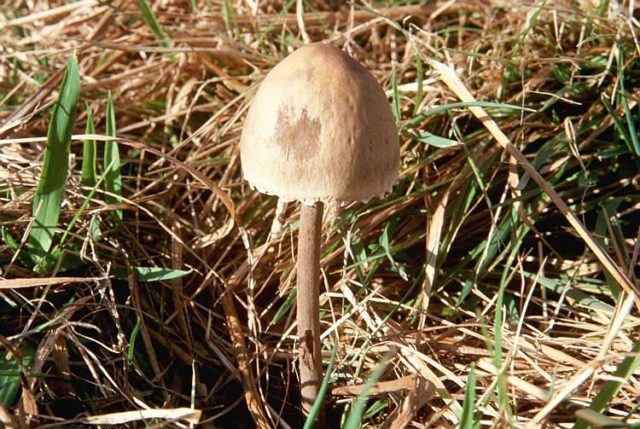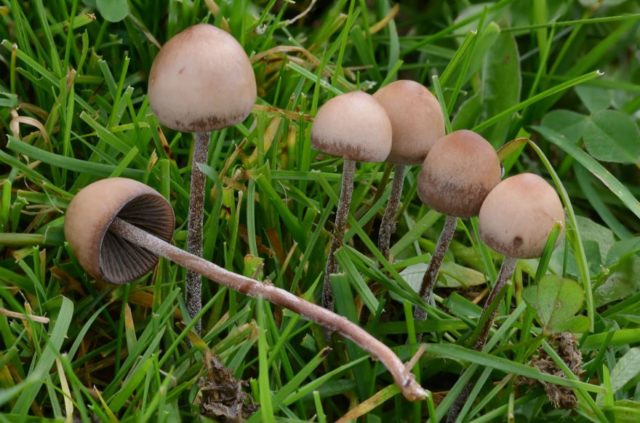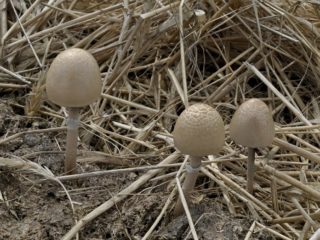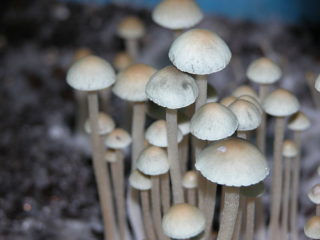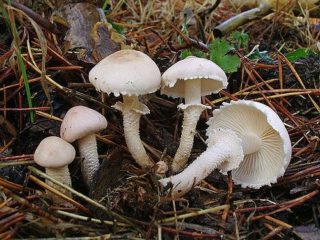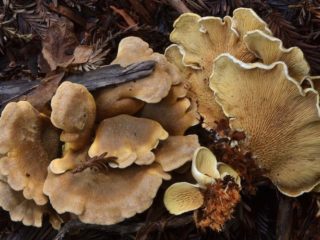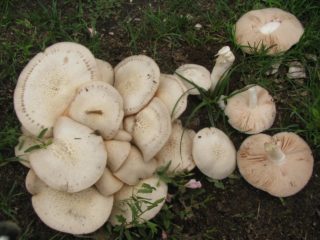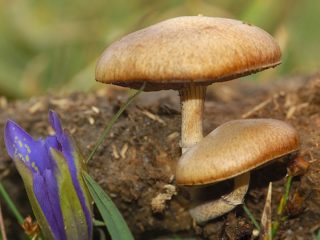Content
Paneolus bell-shaped is an inedible, hallucinogenic species of the Psatirella family. It grows in large families on well-fertilized soil. Causes visual and auditory hallucinations when eaten. In order to protect your body, it is important to be able to recognize the fungus and walk by when meeting it.
What does the bell paneolus look like?
Paneolus bell-shaped, a widespread species, is harmful to health when eaten. Therefore, acquaintance with him must begin with external characteristics.
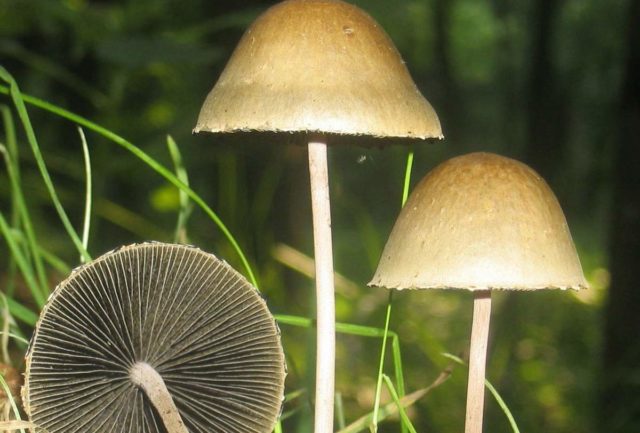
The bell-cap becomes covered with mucus in wet weather.
Description of the hat
A miniature hat with a diameter of 3 cm at a young age has an oval shape. As it matures, the surface takes on the shape of an unopened umbrella or bell. Dry skin is colored in dry weather in a gray-whitish color, and in wet weather it acquires a red-brick hue. Fragile flesh, tasteless and odorless. The spore layer is formed by thin gray-brown plates, which become covered with purple-black specks in old age. Reproduction occurs by black, oblong spores.
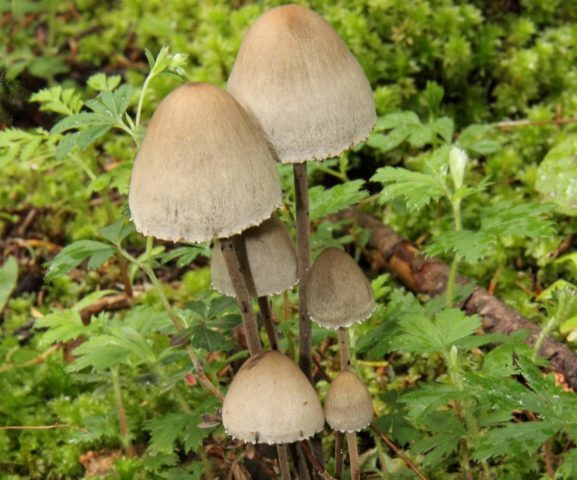
Grows in families on fertile soil
Leg description
The long and thin stem is covered with a shiny skin. At a young age, it is reddish, as it grows, it darkens and acquires a black-brown color. The surface is ribbed, covered with whitish pile.
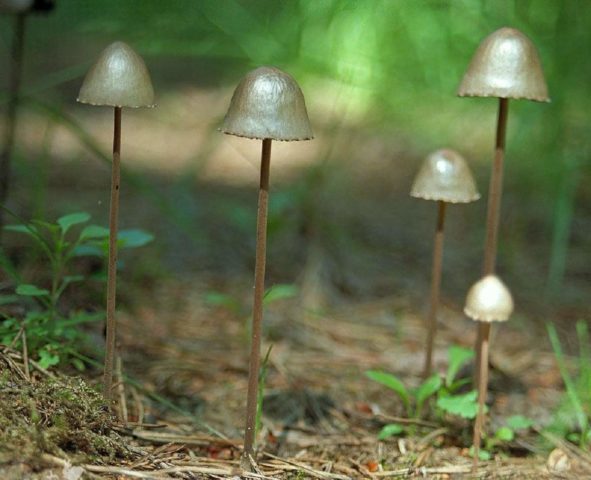
Hollow stem, tasteless and odorless
Where and how it grows
Paneolus bell-shaped grows in large groups. They can be found in large grass, dung heaps, orchards and vegetable gardens. Depending on climatic conditions, it can bear fruit from April to December.
Is the mushroom edible or not
Paneolus bell-shaped is an inedible and very dangerous species. The pulp contains psychoactive substances with hallucinogenic qualities. When eaten, a person is lost in space and begins to notice what he has not seen before. Hearing and vision are sharpened, the world around them changes and becomes funny.
Signs of poisoning:
- perception is sharpened;
- slight memory impairment;
- objects begin to move;
- the perception of time is distorted;
- difficulties in moving;
- complete lack of contact with reality.
Doubles and their differences
Paneolus bell-shaped, like any inhabitant of the forest, has similar twins, such as:
- Papilionaceous - hallucinogenic appearance with a miniature hat. The bell-shaped surface is gray-coffee in color, lightens as it grows. The striped stem is thin and long. When pressed, the grayish flesh changes color. Grows in open areas, prefers well-fertilized soil. Fruiting from spring until the first frost.
The whole warm period grows
- Hay dung - a hallucinogenic mushroom that grows throughout the warm period. You can recognize it by its tiny, light coffee-colored hat. It grows in low grass, in fields, fertile forcing, orchards and vegetable gardens. Leads to emotional distress when eaten.
Causes visual and auditory hallucinations
Conclusion
Paneolus bell-shaped is a dangerous mushroom that grows in tall grass, on fertile soil. The pulp contains toxic substances and, when eaten, causes visual and auditory hallucinations.
